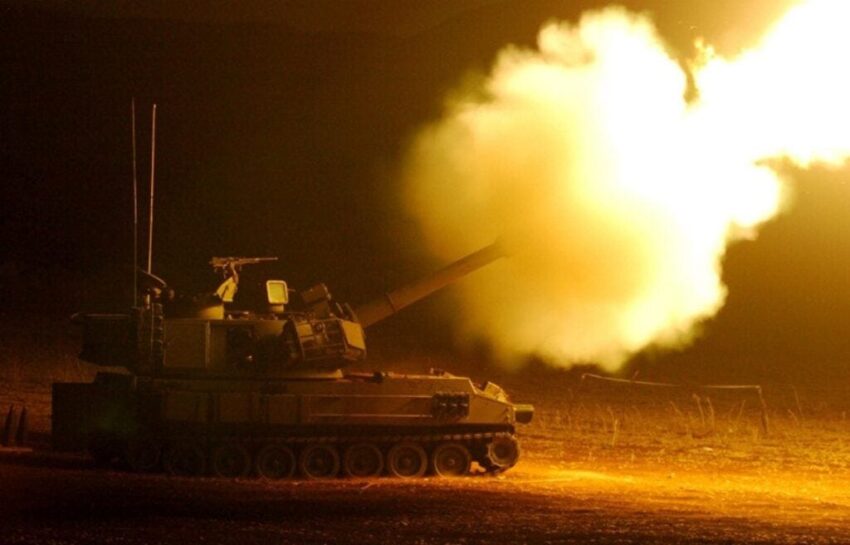When will Palestinian terrorists learn? Defeat after attacking Israel is costly. Israeli Prime Minister Benjamin Netanyahu’s recent announcement to pursue a “full conquest” of the Gaza Strip to end the war should remind everyone that failed attacks on Israel have only made it stronger and bigger, effectively tripling its size since its founding in 1948.
Since then, Israel, while long dreaming of a “Greater Israel,” has generally only expanded in response to being threatened or attacked. Israel’s enemies, Hamas being the most recent, appear incapable of learning that lesson.
This reminds me of an event I participated in Ramallah, about 20 years ago. At the time, this was the headquarters of the Palestinian Liberation Organization (PLO) and I was there as part of a group of journalists a year after Yasser Arafat’s death.
During one presentation, to persuade us that Israel was an evil expansionist state, the PLO representative showed us slides of numerous maps demonstrating how Israel had expanded over the decades since its founding and how much the Palestinian territories had shrunk.
Maps showed Israel expanded in 1948, 1956, 1967, and beyond.
Some of the less informed or biased participants nodded in agreement.
I did not, because I noted that every map the PLO presented that showed Israeli expansion was tied to Israel’s enemies preparing to attack, or attacking Israel and losing, which of course the Palestinians made no mention of.
In their warped version of a presentation, Israel aggressively expanded on its own without any outside factors. A false narrative that continues till today.
One Palestinian group still attempts this visual sleight of hand online here, again omitting the full context of Israeli territorial gains.

And that’s why these are far from accurate. Israel has expanded because it repeatedly defeated its enemies after being attacked.
Israel’s expansion began the day Israel declared itself a state in 1948 following the end of the British mandate for Palestine. And it occurred after several large Arab national armies including Egypt, Syria, Iraq, Transjordan, and Lebanon, invaded the tiny and vulnerable fledgling state hoping to destroy it; but were quickly defeated.
Due to its military success, Israel gained significant territory beyond the 1947 U.N. Partition Plan boundaries that had set aside land for both sides. This began a sad history of Arabs and Palestinians losing land to Israel after repeatedly threatening and attacking the tiny Jewish state.
In 1956, as part of the Suez Crisis, Israel launched a pre-emptive strike against Egypt on October 29, 1956, in conjunction with France and Great Britain.
While the Europeans had their own motivations, Israeli attacked as retaliation for Palestinian fedayeen terror attacks (militant cross-border incursions from Egypt), and to force Egypt to lift its blockade of the Straits of Tiran which hurt Israel.
Israel swiftly captured the Gaza Strip and most of the Sinai Peninsula, advancing close to the Suez Canal.
Israel’s victory also succeeded in getting Egypt to lift its blockade.
However, due to international pressure, Israel ultimately withdrew from the occupied Egyptian territory in March 1957, limiting any real expansion. The 1956 Suez Crisis resulted in a temporary occupation rather than permanent annexation. No land was acquired.
Then, in 1967, as a result of the Six-Day War, Israel gained its greatest amount of new territory. In response to increasing threats, intelligence warnings, and the mobilization of major Arab armies on its vulnerable borders, Israel launched a preemptive strike and destroyed the air forces and armies of Egypt, Jordan and Syria, before they attacked.
It then gained control of the West Bank and East Jerusalem from Jordan, the Golan Heights from Syria, and the Gaza Strip and the Sinai Peninsula from Egypt.
The Sinai was fully returned to Egypt in 1982 as part of the Egypt-Israel peace treaty. But Israel formally annexed the strategic Golan Heights in 1981. The area serves as a buffer zone against potential attacks from its neighbors, particularly Syria.
The U.S. recognized this annexation in 2019.
These conquered territories in 1967 have since become the focal point of the Israeli Palestinian conflict and the broader Arab Israeli dispute and continue to be highly contested with constant calls for Israel to return to its pre-1967 borders.
But it didn’t end there. In 1973, a massive surprise attack by Egyptian and Syrian armies led to initial setbacks for Israel in the Sinai and Golan Heights. However, Israel, with American help, mounted a successful counteroffensive, pushing into Egyptian and Syrian territory.
While Israel did gain some territory, particularly expanding its presence in the Golan Heights beyond the 1967 ceasefire line, a series of disengagement agreements in 1974 and 1975 led to some return of territory, particularly along the Suez Canal to Egypt.
In the end, while providing Israel significant strategic advantages, its victory in the so-called Yom Kippur War of 1973 did not involve a large-scale expansion of territory like the 1967 War had.
Meanwhile, after a failed uprising against the king, the PLO was expelled from Jordan in 1970 and soon set up operations in Lebanon. In response to constant Palestinian attacks from Lebanon, Israel invaded the country in 1978 and again in 1982. Israel then defensively occupied southern Lebanon until 2000, while fighting a counter insurgency conflict against Shia paramilitaries there.
After Israel’s withdrawal in 2000, the Iran-backed Hezbollah terror group occupied much of southern Lebanon and its attacks against Israel sparked the short fought 2006 Lebanon War. With massive Iranian support, Hezbollah continued attacking Israel until just recently when Israeli counter attacks effectively neutralized the terror group. And now have a new ceasefire.
In one sign of major Israeli territorial retrenchment, in 2005 Israel officially removed all its settlements and disengaged from the Gaza Strip in 2005. This was followed soon after by Hamas taking control of the enclave.
In the ensuing two decades, Hamas terrorists, with massive Iranian support, and diverted international aid, turned Gaza into a launch pad for hundreds, if not thousands, of attacks on Israel, creating a sprawling, fortified underground bunker and tunnel system, and amassing an arsenal of missiles and other arms.
Despite a three year lull in attacks, in part to trick Israel into a false sense of security, Hamas successfully launched a brutal terror attack October 7, 2023, on Israel that killed 1,200.
And now because of that vicious attack, and the ferocious Israeli counterattack, in which Hamas has refused to surrender or agree to a cease fire, Gaza will now likely be permanently occupied by Israel. Yet, again repeating history.
LESSON NOT LEARNED — STOP ATTACKING ISRAEL.
Paul Crespo is the President of the Center for American Defense Studies, Managing Editor of American Liberty Defense News, and Managing Partner of SPECTRE Global Risk. As a Marine Corps officer, he led Marines, served aboard ships in the Pacific and jumped from helicopters and airplanes.
He was also a military attaché with the Defense Intelligence Agency (DIA) at U.S. embassies worldwide.
He later ran for congress, taught political science, wrote for a major newspaper and co-hosted his own radio show. A graduate of Georgetown, London and Cambridge universities, he brings decades of experience and insight to the issues that most threaten our American liberty – at home and abroad.
Click this link for the original source of this article.
Author: Paul Crespo
This content is courtesy of, and owned and copyrighted by, https://paulcrespo.substack.com and its author. This content is made available by use of the public RSS feed offered by the host site and is used for educational purposes only. If you are the author or represent the host site and would like this content removed now and in the future, please contact USSANews.com using the email address in the Contact page found in the website menu.
















